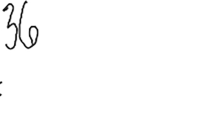Abstract
In this paper, we explore the development of two grounded theories. One theory is mathematical and grounded in the work of university calculus students’ collaborative development of mathematical methods for finding the volume of a solid of revolution, in response to mathematical necessity in problem solving, without prior instruction on solution methods. The second theory emerges from microlinguistic analysis of students’ mathematical choices and use of warrants in substantial argumentation to communicate, clarify, and convince others of the validity of their conjectures and mathematical work. Our goal was to illuminate mathematical argumentation by collaborative groups of calculus students at a qualitative level of detail sufficient to reveal one view of how these students satisfied the creative drive for mathematical meaning, communication, and accuracy in problem solving as evidenced in one classroom over several days.









Similar content being viewed by others
References
Alibert, D., & Thomas, M. (1991). Research on mathematical proof. In D. Tall (Ed.), Advanced mathematical thinking (pp. 215–230). Dordrecht: Kluwer.
Bandura, A. (1997). Self-efficacy: The exercise of control. New York: W.H. Freeman.
Blumer, H. (1969). Symbolic interactionism: Perspective and method. Englewood Cliffs: Prentice Hall.
Boero, P., Douek, N., & Ferrari, P. (2008). Developing mastery of natural language: Approaches to some theoretical aspects of mathematics. In L. English (Ed.), Handbook of international research in mathematics education (2nd ed., pp. 262–295). New York: Routledge.
Bratman, M. E. (2007). Structures of agency: Essays. New York: Oxford University Press.
Brown, T. (2005). Shifting psychological perspectives on the learning and teaching of mathematics. For the Learning of Mathematics, 25(1), 39–45.
Charmaz, K. (2006). Constructing grounded theory: A practical guide through qualitative analysis. Thousand Oaks: Sage.
Davis, P. J. (1993). Visual theorems. Educational Studies in Mathematics, 24(4), 333–344.
Dewey, J. (1913). Interest and effort in education. Cambridge: Riverside Press.
Dewey, J. (1916/1944). Democracy and education. New York: Free Press.
Dubin, R. (1969). Theory building. New York: The Free Press.
Ellis, A. B. (2007). Connections between generalizing and justifying: Students’ reasoning with linear relationships. Journal for Research in Mathematics Education, 38(3), 194–229.
Goffman, E. (1959). The presentation of self in everyday life. Garden City: Doubleday.
Goswami, U. (2004). Commentary: Analogical reasoning and mathematical development. In L. English (Ed.), Mathematical and analogical reasoning of young learners. Mahwah: Lawrence Erlbaum.
Holland, D., Skinner, D., Lachicotte, W., Jr., Cain, C., & Delmouzou, E. (1998). Identity and agency in cultural worlds. Cambridge: Harvard University Press.
Kohn, A. (1998). Choices for children: Why and how to let students decide. In What to Look for in a Classroom. San Francisco, CA: Jossey-Bass.
Krummheuer, G. (1995). The ethnography of argumentation. In P. Cobb & H. Bauersfeld (Eds.), The emergence of mathematical meaning: Interaction in classroom cultures (pp. 229–269). Hillsdale: Lawrence Erlbaum.
Lakatos, I. (1976). Proofs and refutations: The logic of mathematical discovery. New York: Cambridge University Press.
NCTM. (2000). Principles and standards for school mathematics. Reston: National Council of Teachers of Mathematics.
Pedemonte, B. (2007). How can the relationship between argumentation and proof be analysed? Educational Studies in Mathematics, 66, 23–41.
Pietroski, P. M. (1998). Actions, adjuncts, and agency. Mind, New Series, 107(425), 73–111.
Powell, A. B. (2004). The diversity backlash and the mathematical agency of students of color. In M. J. Høines and A. B. Fuglestad (Eds.), Proceedings of the Twenty-Eighth Conference of the International Group for the Psychology of Mathematics Education, vol. 1, Bergen, Norway, pp. 37–54.
Ratterman, M. J. (1997). Mathematical reasoning and analogy: A commentary. In L. English (Ed.), Mathematical reasoning: Analogies, metaphors, and images. Hillsdale: Lawrence Erlbaum.
Rodd, M. M. (2000). On mathematical warrants: Proof does not always warrant, and a warrant may be other than a proof. Mathematical Thinking and Learning, 2(3), 221–244.
Rogers, C. R. (1969). Freedom to learn: A view of what education might become. Columbus: Charles Merrill.
Skovsmose, O. (2005a). Meaning in mathematics education. In J. Kilpatrick, C. Hoyles, & O. Skovsmose (Eds., in collaboration with Paola Valero), Meaning in mathematics education. (pp. 83–100). New York: Springer.
Skovsmose, O. (2005b). Traveling through education: Uncertainty, mathematics, responsibility. Rotterdam: Sense.
Strauss, A., & Corbin, J. (1998). Basics of qualitative research: Techniques and procedures for developing grounded theory. Newbury Park: Sage.
Toulmin, S. (1958/2003). The uses of argument. Cambridge, UK: Cambridge University Press.
Wagner, D. (2007). Students’ critical awareness of voice and agency in mathematics classroom discourse. Mathematical Thinking and Learning, 9(1), 31–50.
Walter, J. G., & Gerson, H. (2007). Teachers’ personal agency: Making sense of slope through additive structures. Educational Studies in Mathematics, 65(2), 203–233.
Walter, J. G., & Johnson, C. (2007). Linguistic invention and semantic warrant production: Elementary teachers’ interpretations of graphs. [Special issue]. International Journal of Science and Mathematics Education, Language: An End and a Means to Mathematical Literacy and Scientific Literacy, 5(4), 705–727.
Weber, K., & Alcock, L. J. (2004). Semantic and syntactic proof productions. Educational Studies in Mathematics, 56, 209–234.
Author information
Authors and Affiliations
Corresponding author
Additional information
Preliminary versions of portions of this paper have appeared in the Proceedings for the Eleventh Special Interest Group of the Mathematical Association of America on Research in Undergraduate Mathematics Education, San Diego, CA (2008), and in the Proceedings of the 31st Annual Meeting of the North American Chapter of the International Group for the Psychology of Mathematics Education, Atlanta, GA (2009).
Rights and permissions
About this article
Cite this article
Walter, J.G., Barros, T. Students build mathematical theory: semantic warrants in argumentation. Educ Stud Math 78, 323–342 (2011). https://doi.org/10.1007/s10649-011-9326-1
Published:
Issue Date:
DOI: https://doi.org/10.1007/s10649-011-9326-1



